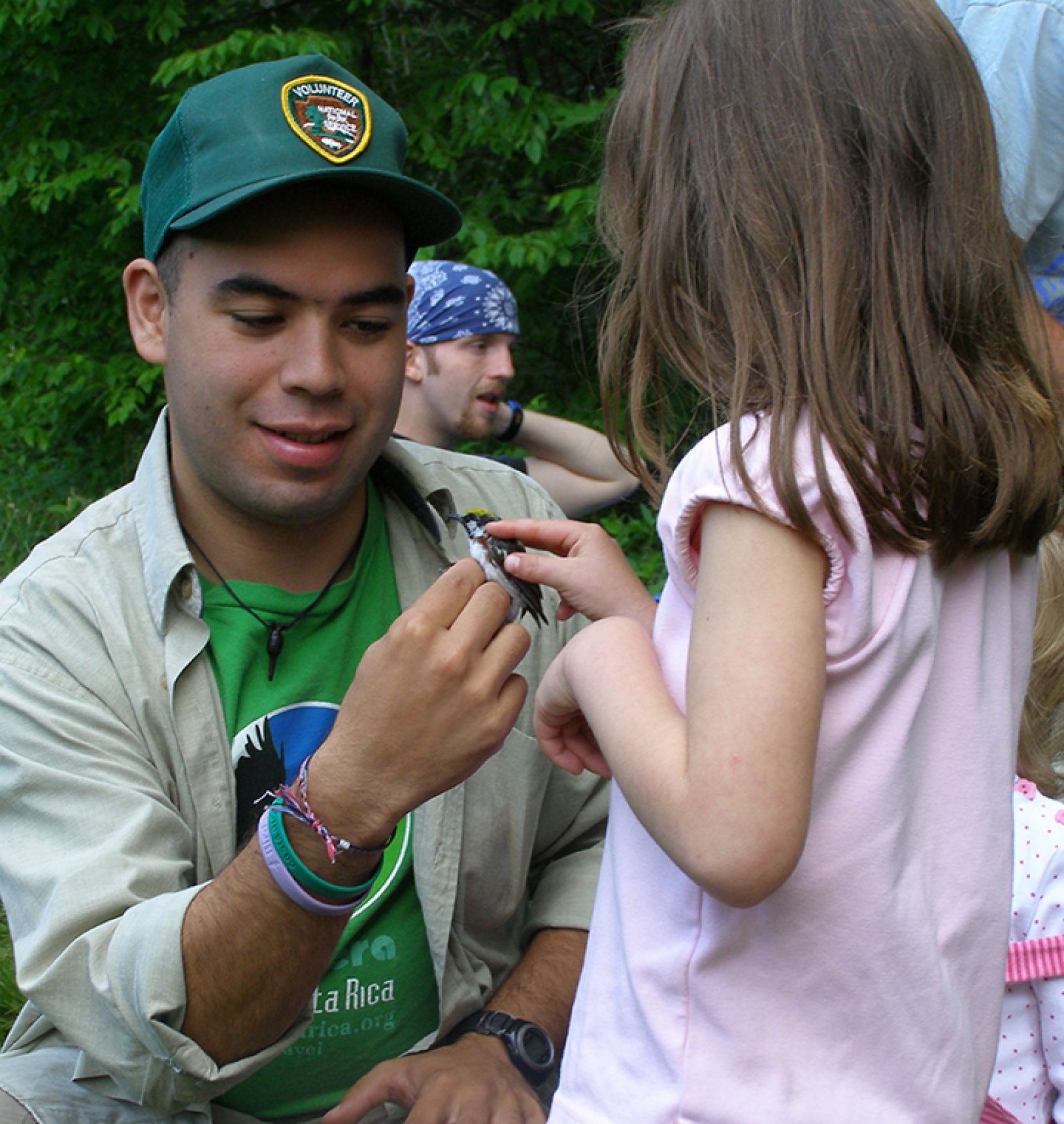We often hear about the importance of migratory bird programs that build capacity internationally for shared species conservation. But what exactly does that mean, and how does one measure the success of such efforts?
The Park Flight Migratory Bird Program was created with the vision of connecting U.S. national parks and partners in the United States with protected areas in countries with shared migratory bird species. The program integrated bird monitoring and education into three components: projects on the breeding and wintering grounds; south-to-north technical exchange through the National Park Service’s International Volunteers in Parks (IVIP) program; and north-to-south technical assistance.
Over a ten-year period, starting in 2001, about 85 IVIPs from 19 countries in the Western Hemisphere were involved in Park Flight internships. So, what have these former Park Flight interns done since then in their home countries?
In 2002, Alexis Cerezo came from Guatemala to Sequoia and Kings Canyons National Parks, where he helped with a MAPS (Monitoring Avian Productivity and Survivorship) banding station, under the tutelage of NPS and Institute for Bird Populations staff.
“The most important contribution of the Park Flight Program was the training and experience I and my partner Miguel Ramírez
Back in Guatemala after his internship, Alexis began the MoSI program, which monitors Neotropical migrants in winter, “starting a very fruitful collaboration with IBP that continues today.” Alexis is currently the Biological Research Director of FUNDAECO, and Miguel is Coordinator of FUNDAECO’s Resident and Migratory Bird Monitoring Program of Caribbean Guatemala.
In 2004, Guido Berguido of Panama received training at Point Reyes National Seashore through its partner Point Blue.
“The Park Flight Internship was indeed a life-changing experience,” said Guido. Upon his return to Panama, he joined the Board of Directors of the Panama Audubon Society. Later, with another Park Flight alumnus, Chelina Batista (NJ Audubon and NPS, 2005), Guido founded and became Executive Director of ADOPTA, which is currently involved in the Neotropical Flyways Project with Cornell Lab of Ornithology and SELVA from Colombia to identify the most important sites used by migratory birds in Panama.
Guido and Chelina were recently selected as the Regional Coordinators for Latin America for World Migratory Bird Day.
Pablo (Chespi) Elizondo from Costa Rica was a Park Flight intern at Great Smoky Mountains National Park in 2007. After returning home, he partnered with the U.S. Forest Service, Klamath Bird Observatory, and National Institute of Biodiversity to coordinate bird monitoring efforts country-wide.
He established and became Executive Director of the Costa Rica Bird Observatories and Costa Rica Bird Banding Network, and is also Chair of the Western Hemisphere Bird Banding Network. As the long-time National Coordinator for Partners in Flight in Costa Rica, he organized the 6th International Partners in Flight Conference in 2017 in Costa Rica, the first to be held outside the U.S.
Chespi just announced the first payment in the Americas for ecosystem services for migratory birds, specifically for the Golden-winged Warbler, which is one of the highest priority Partners in Flight species.
Bandelier National Monument in New Mexico also hosted Park Flight interns, in collaboration with the Pajarito Environmental Education Center. Eveling Tavera Fernández came to Bandelier from Peru in 2008.
“The Park Flight internship helped me to develop my skills with bird banding but also helped me to realize the importance of a banding program for a country,” said Eveling. “Perú didn’t have anything like that yet. So one year later, in 2009, I brought the idea to CORBIDI and now we have established since 2010 the first bird banding program for the country…with more than 2,000 people getting trained.”
Eveling is currently Chair of the Western Hemisphere Shorebird Group and the North American Banding Council’s Shorebird Committee.
Ultimately, credit for the success of Park Flight goes to those who hosted, trained, mentored, and supported these international interns, and to the dedicated interns themselves who worked hard to achieve the program’s goals in the U.S., then went back to their countries to make a lasting difference for migratory bird conservation.
By Carol Beidleman, Environment for the Americas, formerly Park Flight Migratory Bird Program Coordinator.
For more information on the NPS International Volunteers in Parks Program, see https://www.nps.gov/subjects/internationalcooperation/ivip.htm.

